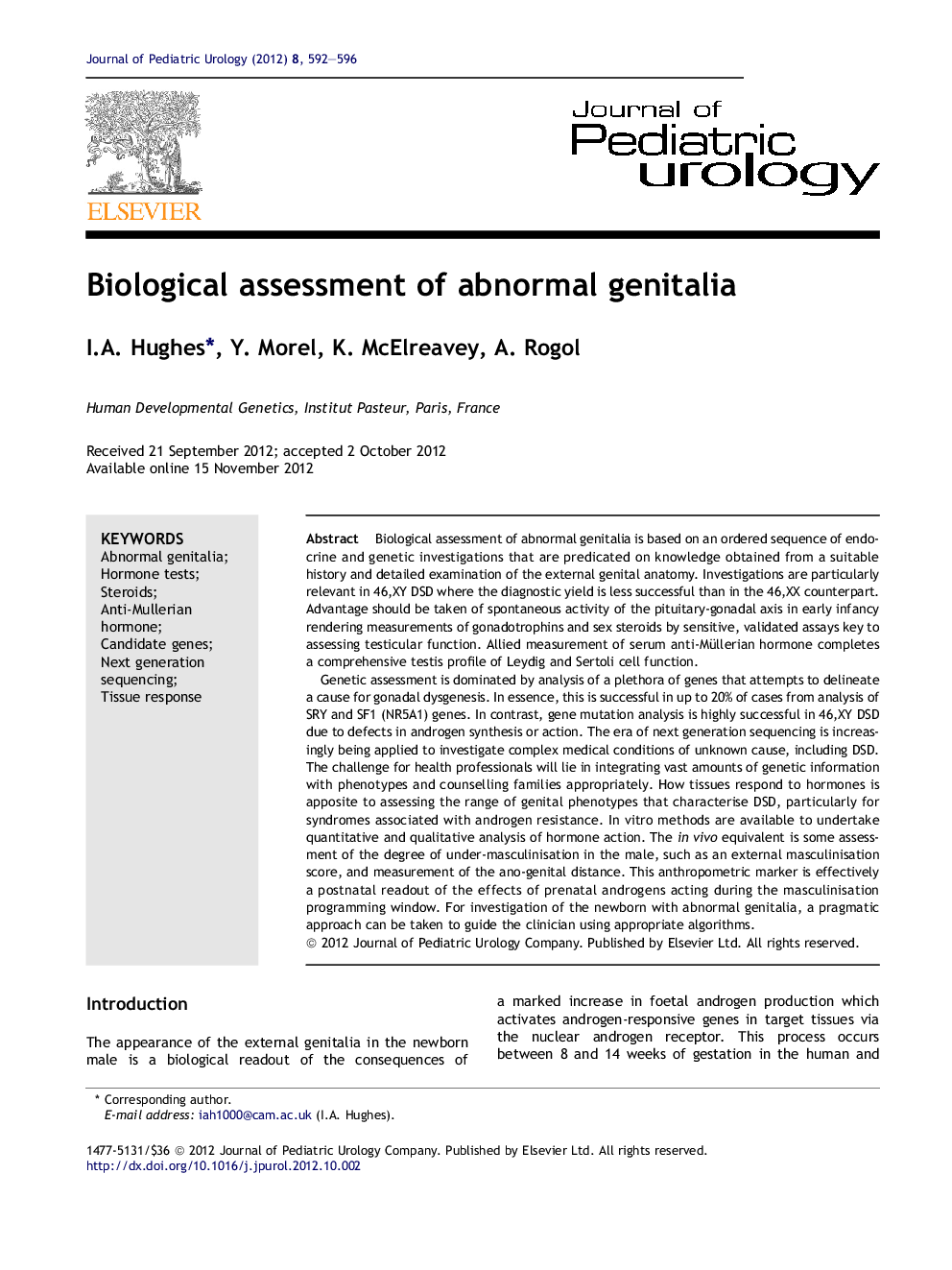| کد مقاله | کد نشریه | سال انتشار | مقاله انگلیسی | نسخه تمام متن |
|---|---|---|---|---|
| 4162655 | 1274286 | 2012 | 5 صفحه PDF | دانلود رایگان |

Biological assessment of abnormal genitalia is based on an ordered sequence of endocrine and genetic investigations that are predicated on knowledge obtained from a suitable history and detailed examination of the external genital anatomy. Investigations are particularly relevant in 46,XY DSD where the diagnostic yield is less successful than in the 46,XX counterpart. Advantage should be taken of spontaneous activity of the pituitary-gonadal axis in early infancy rendering measurements of gonadotrophins and sex steroids by sensitive, validated assays key to assessing testicular function. Allied measurement of serum anti-Müllerian hormone completes a comprehensive testis profile of Leydig and Sertoli cell function.Genetic assessment is dominated by analysis of a plethora of genes that attempts to delineate a cause for gonadal dysgenesis. In essence, this is successful in up to 20% of cases from analysis of SRY and SF1 (NR5A1) genes. In contrast, gene mutation analysis is highly successful in 46,XY DSD due to defects in androgen synthesis or action. The era of next generation sequencing is increasingly being applied to investigate complex medical conditions of unknown cause, including DSD. The challenge for health professionals will lie in integrating vast amounts of genetic information with phenotypes and counselling families appropriately. How tissues respond to hormones is apposite to assessing the range of genital phenotypes that characterise DSD, particularly for syndromes associated with androgen resistance. In vitro methods are available to undertake quantitative and qualitative analysis of hormone action. The in vivo equivalent is some assessment of the degree of under-masculinisation in the male, such as an external masculinisation score, and measurement of the ano-genital distance. This anthropometric marker is effectively a postnatal readout of the effects of prenatal androgens acting during the masculinisation programming window. For investigation of the newborn with abnormal genitalia, a pragmatic approach can be taken to guide the clinician using appropriate algorithms.
Journal: Journal of Pediatric Urology - Volume 8, Issue 6, December 2012, Pages 592–596